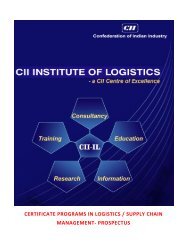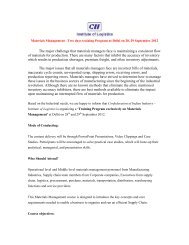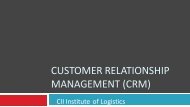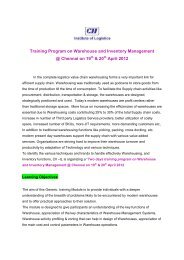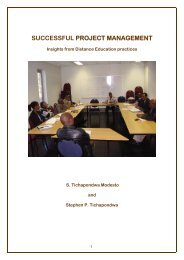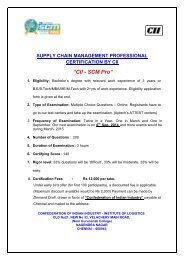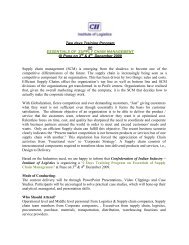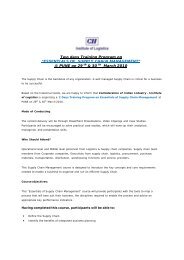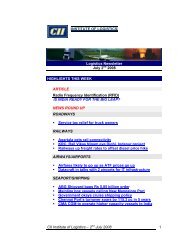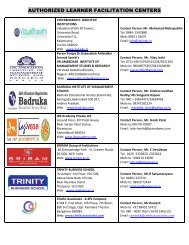Total Quality Management - CII Institute of Logistics
Total Quality Management - CII Institute of Logistics
Total Quality Management - CII Institute of Logistics
Create successful ePaper yourself
Turn your PDF publications into a flip-book with our unique Google optimized e-Paper software.
<strong>Total</strong> <strong>Quality</strong> <strong>Management</strong><br />
2. Where is the process centered?<br />
The average <strong>of</strong> the histogram and the specification midpoint are close together;<br />
therefore, the process is well centered. When the average <strong>of</strong> the histogram and the<br />
specification midpoint are far apart, then the process setting needs some<br />
adjustment.<br />
3. Is the process capable <strong>of</strong> meeting the engineering specification?<br />
The spread <strong>of</strong> the process falls within the specification limits; therefore, the<br />
process is estimated to be capable <strong>of</strong> meeting the engineering specification.<br />
Remember that the histogram is merely a snapshot <strong>of</strong> the process. If we take another set<br />
<strong>of</strong> data at another time, the picture may be different. However, the information we have<br />
on this process tells us that it is capable <strong>of</strong> meeting the engineering specification.<br />
People in manufacturing <strong>of</strong>ten form opinions about the quality <strong>of</strong> the parts they are<br />
making based on far less information than we had in the example above. It is much wiser<br />
and safer to use a statistical technique, as we did, to see what the job is doing before we<br />
decide how good or how bad the parts are. Remember the old saying, "One picture is<br />
worth a thousand words". Few people can look at a set <strong>of</strong> jumbled-up data and see the<br />
same things they can see after the data have been organized in pictorial form.<br />
Once you begin to think statistically about your job, you will find that you naturally want<br />
to get factual data and plot it in the appropriate form. With this method, you will make<br />
good decisions based on facts instead <strong>of</strong> giving opinions based on measurements from<br />
only a few pieces.<br />
The process spread is determined by the curve it forms. When this curve is compared to<br />
the specification, we can tell when the process is making parts outside the specification.<br />
When the spread <strong>of</strong> the curve is wider than the specification or when one tail <strong>of</strong> the curve<br />
goes outside <strong>of</strong> the specification, we can estimate the number <strong>of</strong> pieces that fall outside<br />
the specification.<br />
<strong>CII</strong> <strong>Institute</strong> <strong>of</strong> <strong>Logistics</strong> 77<br />
Website: www.ciilogistics.com





